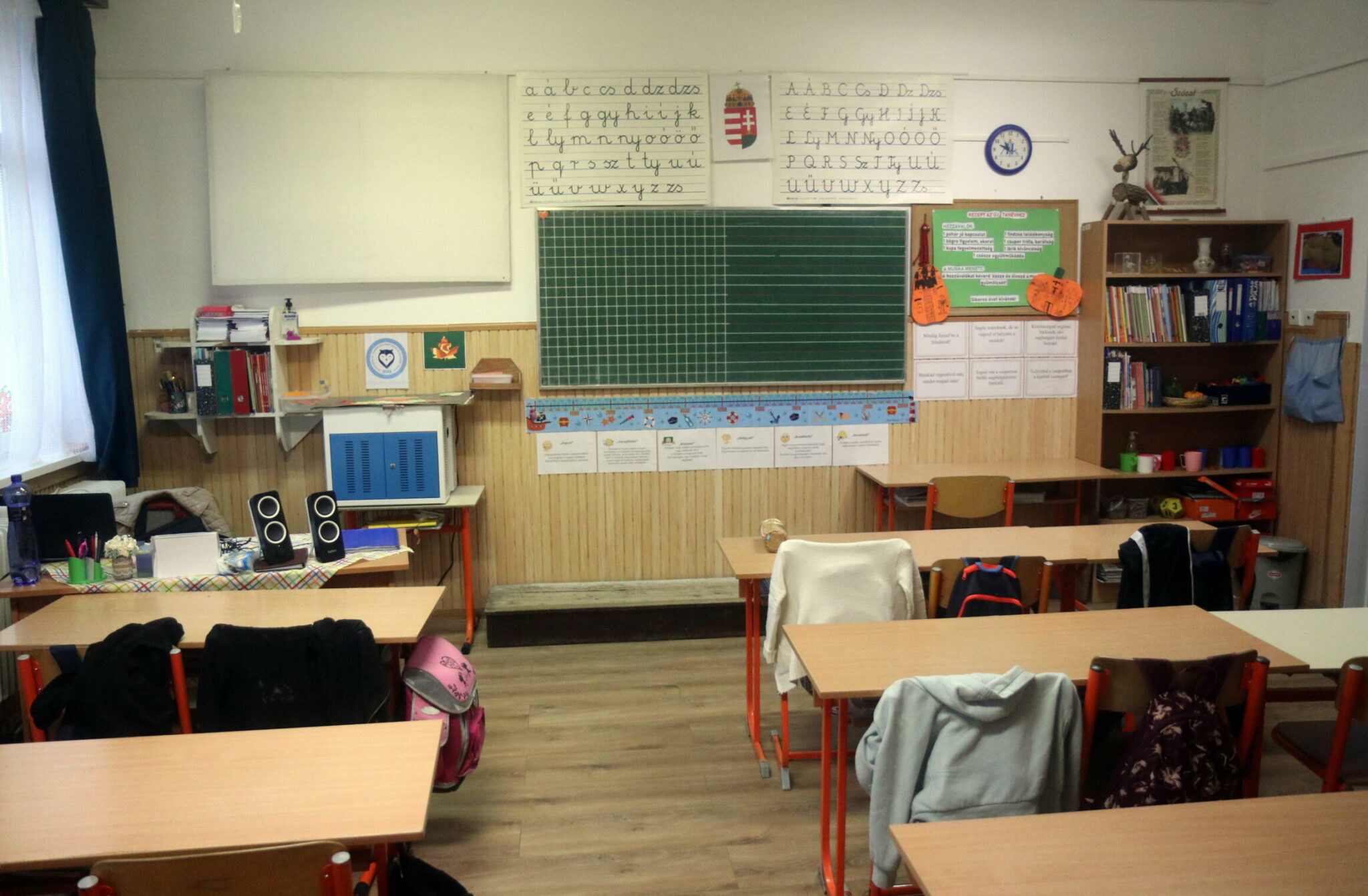The https://english.atlatszo.hu use cookies to track and profile customers such as action tags and pixel tracking on our website to assist our marketing. On our website we use technical, analytical, marketing and preference cookies. These are necessary for our site to work properly and to give us inforamation about how our site is used. See Cookies Policy
More than five per cent of teachers left Hungarian public education in 2023
The start of this school year also meant that teachers in public education had to decide whether to accept the changes brought about by the Public Education Act, known as the Status Act, which sets out the framework for teachers’ new careers. They had until the end of September to do so, but speculation began well before then about how many would decide not to continue teaching. We have visualised the data requested from school districts to find out how many have left, what the situation is in terms of new employees, and asked the two teachers’ unions for their views.
Teachers in Hungarian state schools had until the end of September to declare whether they accepted the new status that came with the law adopted in July, which brought several changes to their lives. As the deadline approached, the war of numbers intensified, with the government repeatedly communicating that they were not worried about teachers leaving in masses, while teachers’ unions and other stakeholders have long been sounding the alarm that the already significant teacher shortage would be further exacerbated.

We’ve put on the map the figures sent by school districts to our FOI request, to show how many teachers have left each school district over the past year, with a special focus on the summer-autumn period, and we also show exactly what percentage of the total teaching force this represents, and whether they have been replaced or not.
Map of the teachers who decided to leave
In mid-October, we sent an FOI request to the 60 school district centres to find out exactly how many teachers had left their schools between January and September.
In the spring, the government published its draft public education law, known as the Status Law, which laid out the framework for a new career path for teachers, but critics have dubbed it the “vengeance law”. The main provisions came into force in mid-July, but teachers had until the end of July to decide whether to accept the new status.
We received the requested information from 59 school districts 30 days after our data request.
The data show that in 2023, 4 314 teachers in schools under the control of school districts had left their profession. Most teachers resigned in July and August, 66.4% of the total number of resigning teachers decided to leave during this period.
There are school districts where one in ten teachers left
However, the number of resignations alone does not tell us much. There are statistics available on the website of the Educational Authority (Oktatási Hivatal in Hungarian) which include the number of teachers. The most recent figure is for October 2022. Calculated from these figures, we can say that more than five per cent of teachers in 59 school districts decided to resign this year.
If we look only at the summer period – when in all likelihood the majority of teachers who left teaching were those who did not want to accept the new status – we find that more than four per cent of full-time and part-time teachers left.
Another important data point is how, if at all, the missing teachers are being replaced, i.e. how many teachers have started their public service in the school districts this year, and specifically in the summer-autumn period. The data from the 59 school districts show that almost twice as many teachers started working in the institutions under their responsibility than left.
Moreover, one in eight teachers who joined a school district this year started between June and September.
The government put the number of resigning teachers at one per cent
More than 5,000 teachers said in a survey this summer that they would leave their jobs if the status law came into force. In mid-July, Tünde Tóth, vice-president of the PSZ, told Átlátszó that the number of teachers who have resigned or taken the initiative to retire is around 2,000.
Budapest has the highest number of teachers who have decided to leave their jobs. This is followed by Pest and Komárom-Esztergom counties. The lowest number of teachers who decided to leave teaching was in the Tolna and Heves county school districts.
At the same time, the government’s communications have consistently reiterated that they do not expect mass departures. The most recent data was provided by Bence Rétvári, Parliamentary State Secretary of the Ministry of Interior, who told Magyar Nemzet in October that „not even a fraction of the five to ten thousand number announced in advance left the profession, a total of 1205 teachers, roughly one percent, declared that they would not transfer to the new law.”
However, G7’s analysis shows that the one per cent figure is misleading when compared to the total number of teachers. According to KSH data for the school year 2022/2023, there are around 140,000 teachers, but this includes teachers from state institutions, as well as schools run by the churh or different foundations, while the number of teachers leaving only applies to state institutions (run by school district centres).
Union says the government fails at running education
Tamás Totyik, president of the Trade Union of Teachers (PSZ), told Átlátszó about the numbers war over the departing teachers and the government’s position:
“The government is very good at communication, but it fails at running education.”
According to them, it is mainly younger people who have decided to leave, as well as those living in the capital and the county seats, as they generally have better job prospects than those living in smaller settlements. Although no precise figures are available, the president said that the number of people leaving kindergartens in the last academic year was also around 1,000, and that a similar number of people left church-run institutions as in state schools.

A classroom renovated under the Hungarian Village Programme on the day of the handover of the improvements at Gárdonyi Géza Primary School in Halmaj on 27 October 2023. Source. MTI photo.
Teacher shortages are a long-standing problem, but it could become much worse
Teacher shortages are not a new phenomenon in Hungarian public education. According to estimates, there were 16,000 teachers absent from the system at the start of last year. In our article and video in October last year, we focused on the increasingly critical situation that schools do not have enough teachers to teach children.
In September this year, we showed that nearly 600 teacher vacancies in the public education sector started the school year with nearly 600 unfilled posts, according to the Public Sector Job Portal. We have produced infographics showing which subjects teachers were most in demand, and where in the country the teacher shortage was greatest.
Written and translated by Zita Szopkó. Data visualisation: Krisztián Szabó. The original, more detailed Hungarian version of this story can be found here. Cover photo: One of the classrooms of the Biatorbágy Innovative Technology and Secondary School on the day of the inauguration of the new building, 29 August 2023. (photo: MTI/Máthé Zoltán)


